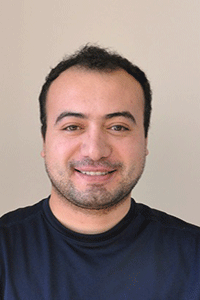Three members of University of Wisconsin-Madison Mechanical Engineering Professor Lih-Sheng (Tom) Turng’s research group at the Wisconsin Institute for Discovery won top awards for their exceptional research papers at the Society of Plastics Engineers annual technical conference in Detroit in March 2019.
Mechanical engineering PhD student Galip Yilmaz won the best paper award from the SPE injection molding division for his paper, “Injection molding and injection compression molding of ultra-high-molecular weight polyethylene: minimized thermal degradation and delamination layer formation.”
The paper, which was published Dec. 5, 2018, in the journal Polymer Engineering and Science, details a way to use injection molding technology to mass produce ultra-high-molecular-weight polyethylene (UHMWPE), a high-grade specialty polymer.
For more than four decades, industry has used UHMWPE as an advanced material in total joint replacements because of its excellent properties. But due to its difficult-to-process nature, its application in injection molding—one of the common polymer processing technologies—has left much to be desired.

Galip Yilmaz 
Thomas Ellingham
Yilmaz’s paper showed that producing quality UHMWPE parts in mass-production processes is possible if proper injection molding methods and production parameters are used. By employing the injection-compression method and optimizing the process, Yilmaz and his collaborators were able to process UHMWPE gently without jeopardizing its molecular structure.
“Being able to injection mold UHMWPE gives industry a way to take advantage of UHMWPE’s superior mechanical properties and surface quality,” says Yilmaz, whose work has led to a sponsored research project with a major international resin supplier.
Tom Ellingham (MSME ‘14, PhDME ’19) won the best paper award from the SPE extrusion division for his paper, “Non-linear rheological response as a tool for assessing dispersion in nanocomposites and blends made with sub-critical gas-assisted processing.”
The paper explores a unique new way to characterize how well two materials are blended by measuring tiny changes in the way the blend responds to deformation. This new method is able to capture differences in blend quality that traditional methods cannot. Applications of this research include quality control methods for process engineers who work on blending, compounding and nanocomposites.
“Obtaining a good blend with certain materials can be difficult,” says Ellingham. “This method can help discern whether or not the process the engineer employs is effective or not. Likewise, the main difficulty with nanocomposites is getting a good dispersion of mixture, and this method can help measure the quality of the dispersion where other methods may not be able to.”
After earning his PhD, Ellingham began working at 3M as a senior research scientist/engineer.
Mechanical engineering visiting PhD student Shujie Yan won the best graduate student paper award from the SPE bioplastics and renewable technologies division for her paper, “A novel small-diameter eggshell membrane/TPU double-layered vascular scaffold with wavy structure.”
Yan and her collaborators are working to create small-diameter artificial vascular grafts that mimic the mechanical performance of native blood vessels. These synthetic grafts with inner diameters smaller than 4 millimeters would eliminate the need to harvest vessels from the patient for bypass surgeries.

“Vascular tissue engineering is a promising strategy in vascular replacement and can overcome the limitations of autograft implantations such as pain, infection and slow healing at donor sites,” Yan says.
To improve the performance of synthetic grafts, the research team developed a way to allow the graft to function as the scaffolding upon which the endothelial cells will adhere and grow outside of a patient’s body.
Specifically, Yan developed a unique eggshell membrane, from a raw chicken egg, as an artificial scaffold to allow for the seeding of endothelial cells on thermoplastic urethane (TPU) grafts. Yan used this unique and natural biomaterial in conjunction with an outer TPU membrane layer fabricated by electrospinning to create the double-layered, small-diameter scaffolds.
The researchers worked with the Wisconsin Alumni Research Foundation to patent their technology related to the sub-critical gas-assisted processing (SGAP) method Ellingham detailed in his paper as well as their artificial blood vessel work, with some additional patents pending.
This article originally appeared on engr.wisc.edu. Author: Adam Malecek


You must be logged in to post a comment.